Putting our dogs first
Promoting animal welfare in dog sledding
As tourists on holiday, we are often faced with difficult decisions as to whether to support animal tourism or not. There are certainly many animal welfare questions to consider when deciding to join a dog sledding tour.
We aim to provide a transparent account of our animal welfare practices regarding our sled dogs here at Arctic Adventure Tours.
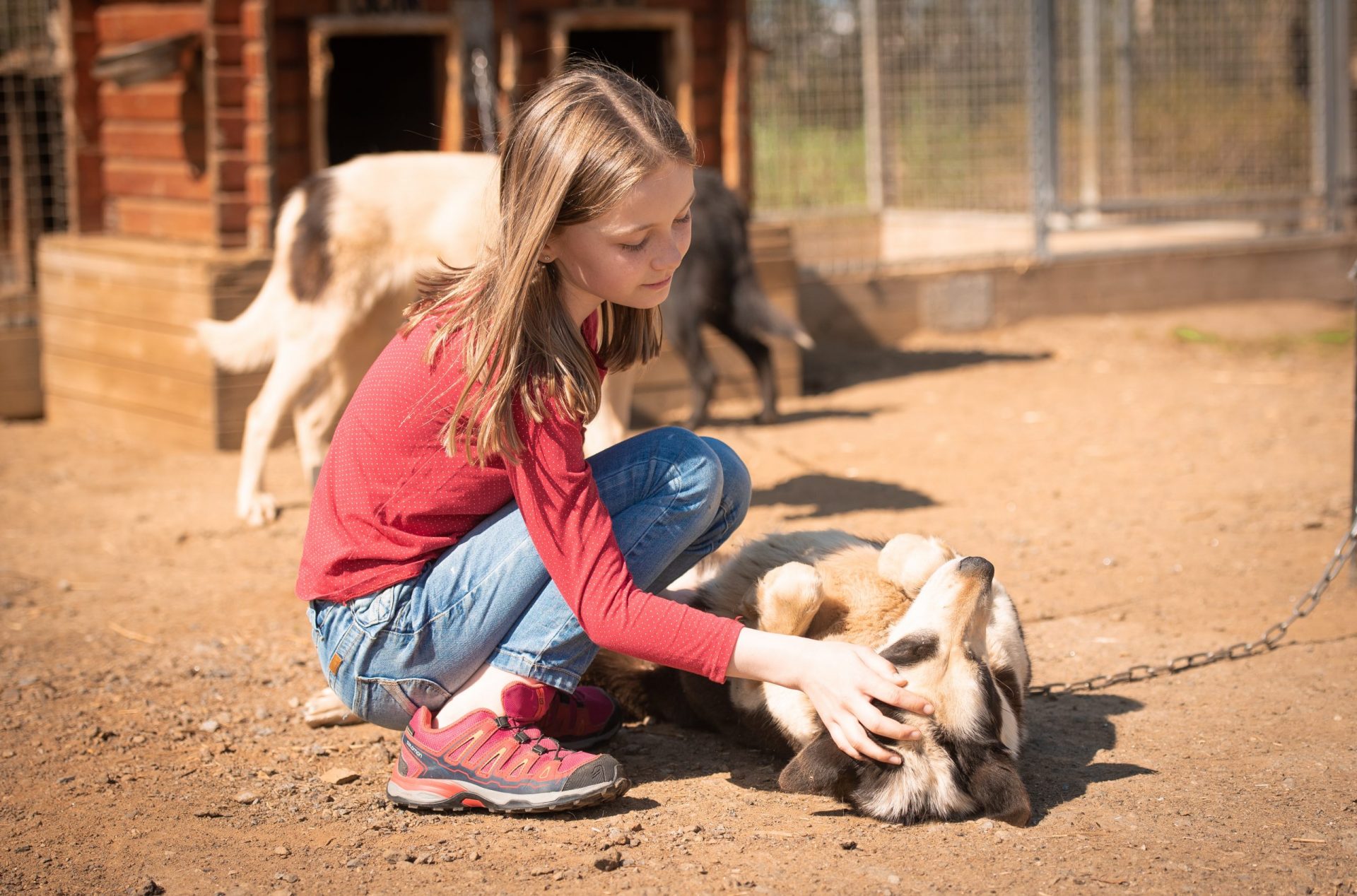
We currently have 120 Alaskan Huskies living at our kennel in Tromsø. Our dogsledding tours allow guests to experience the wilderness of Arctic Norway. In winter we operate dog sledding tours up in the mountains, and in the summer time we take husky hiking trips and use our free running areas for the dogs to enjoy their own doggy summer holiday!
At the core of our business is the love for our dogs. They are our family.
We encourage our guests to ask questions and look around our kennel. We love to take time to explain how we look after our dogs and what animal welfare measures we take to care for their physical and emotional needs.
Keeping warm in winter: the perfect coat for all occasions
Many guests visiting our kennel in winter time are impressed with our dog’s thick fur. Alaskan huskies actually have what is known as a ‘double coat’. This is the perfect type of fur for life in the Arctic.
As long as a husky’s fur is well groomed, the combination of the insulating layer and the protective layer is the perfect system.
In the autumn, our dogs begin to grow extra insulating fur which lies close to their skin and is more ‘fleecy’ or ‘woolly’ in texture. Longer ‘guard hairs’ protect this insulating layer from rain, wind and snow. Guard hair is coarser and longer and serves to keep out wind and water.
In summer, their double coat also works well to insulate against heat. Every year our huskies will shed most of their undercoat, but not all of it. This then allows cool air to circulate close to the skin and remove heat from the dog’s body.
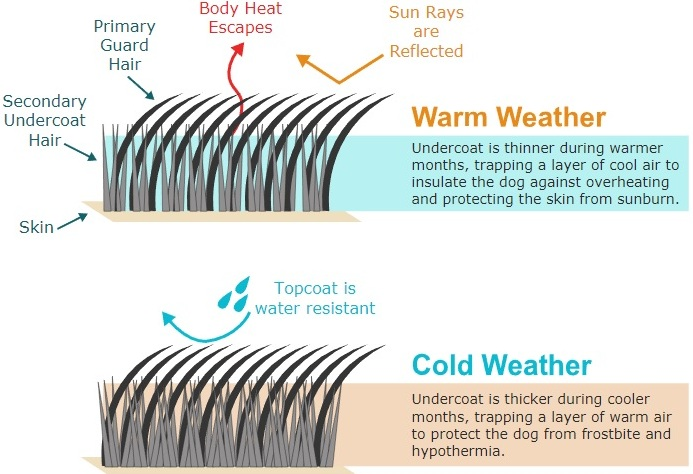
We spend many hours in summer grooming our huskies, to remove most of the loose insulating layer allowing more cool air to circulate closer to the skin.
In the winter we also add a thick layer of straw into each dog house. This provides extra insulation and a soft bed for our dogs to enjoy. We regularly check to make sure each dog has enough straw and that the straw in each dog house is clean and dry.

Playing by the Rules: Norwegian regulations
Here in Norway, we have strict government regulations regarding the conditions for dogs who live outside. These regulations state that dogs living outside must:
- Have thick fur suitable for living outside in winter
- Females with puppies under 6 months old may not live outside
- In certain cases, sick, injured or old dogs may be required to be kept in a heated room
- Have access to a dog house which contains clean, dry and soft bedding such as hay, straw or wood shavings
- Have access to water at least twice per day
- Have regular physical check ups. Assessing skeletal and muscle tone, and thorough checks of eyes, ears, fur, paws, claws and teeth. Dental problems must be checked by a veterinarian
- Be in the ‘ideal weight’ category (see Body Condition Score diagram)
- Follow a vaccination program
- Have regular physical exercise year-round
- If tethered, dogs must be disconnected from the tether regularly and have access to a free run area


Travelling in Style: Transportation of our dogs
We have several dog trailers of various sizes that are specifically designed for transporting huskies. Each dog has its own ‘dog box’ with ventilation, a secure lock and a layer of straw inside to ensure they have a soft surface to lie on during travel. At the end of the winter season in Tromsø, we begin our Weeklong Dog Sledding Expeditions. This means that we must pack up the kennel and load all of the dogs into the largest dog trailer.
Our dogs never need an invitation to jump into the dog trailer! They love it!
As soon as the dogs see the dog trailer being moved into position in the dog yard, they all get very excited. They know that this means they will be going on an exciting adventure. We always take care to check the weather and plan our travel in the early hours or late evening if transporting dogs in summer time. Dogs are not fed before travel to avoid motion sickness and discomfort.
Dog Sledding: Exploring the wilderness naturally
When we welcome guests on a dog sledding trip, they will notice how excited the dogs are to run. Barking and howling and ready to GO! But once the sleds are released and you find yourself out on the mountainside, then you notice the silence.
When the dogs are in ‘work mode’, all you can hear is quiet panting and the crunch of paws on snow.
This means less disturbance to the wildlife that we share this ‘arctic playground’ with. On our dog sledding tours some guests have been lucky enough to spot grouse, fish eagles, moose and arctic hare.

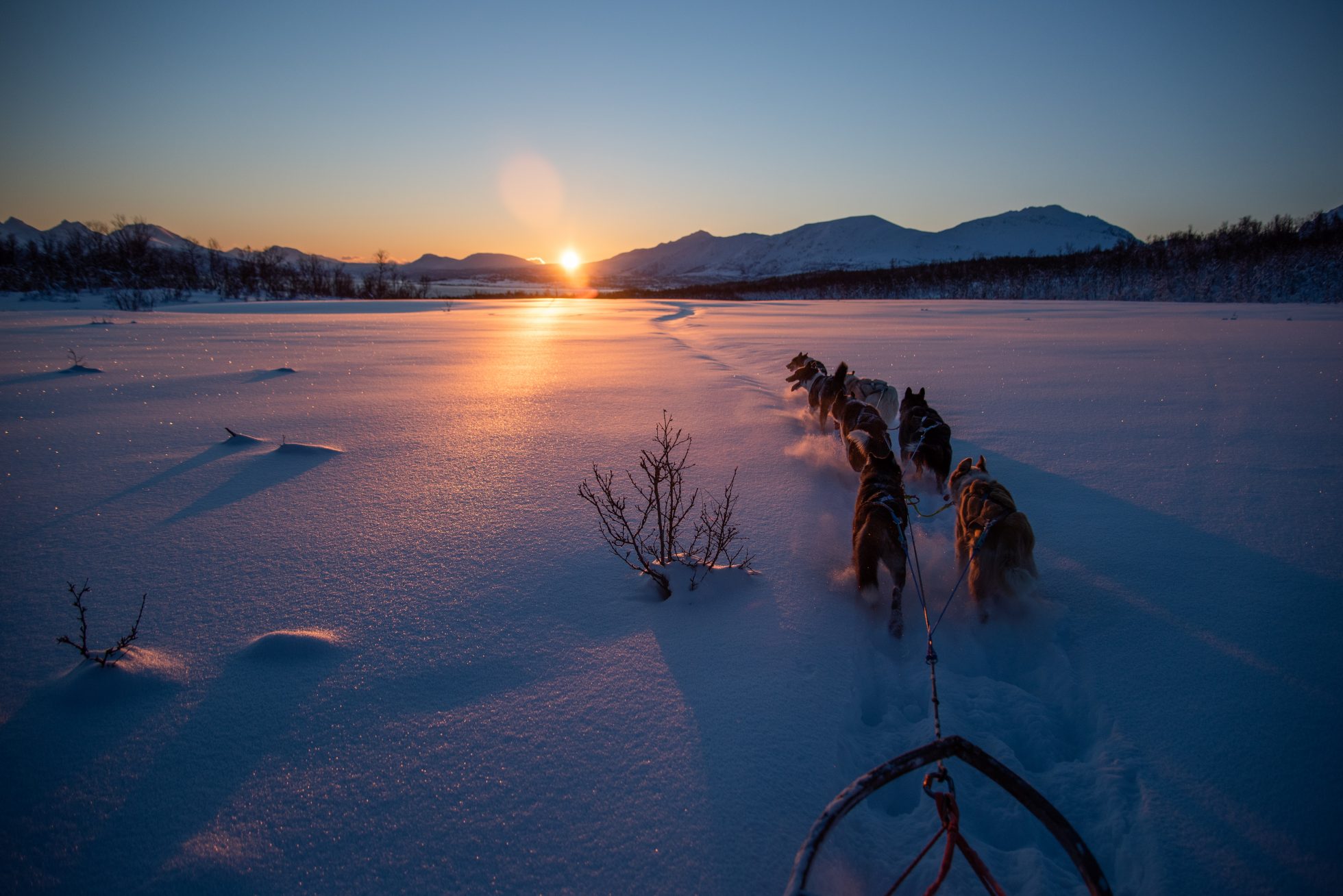
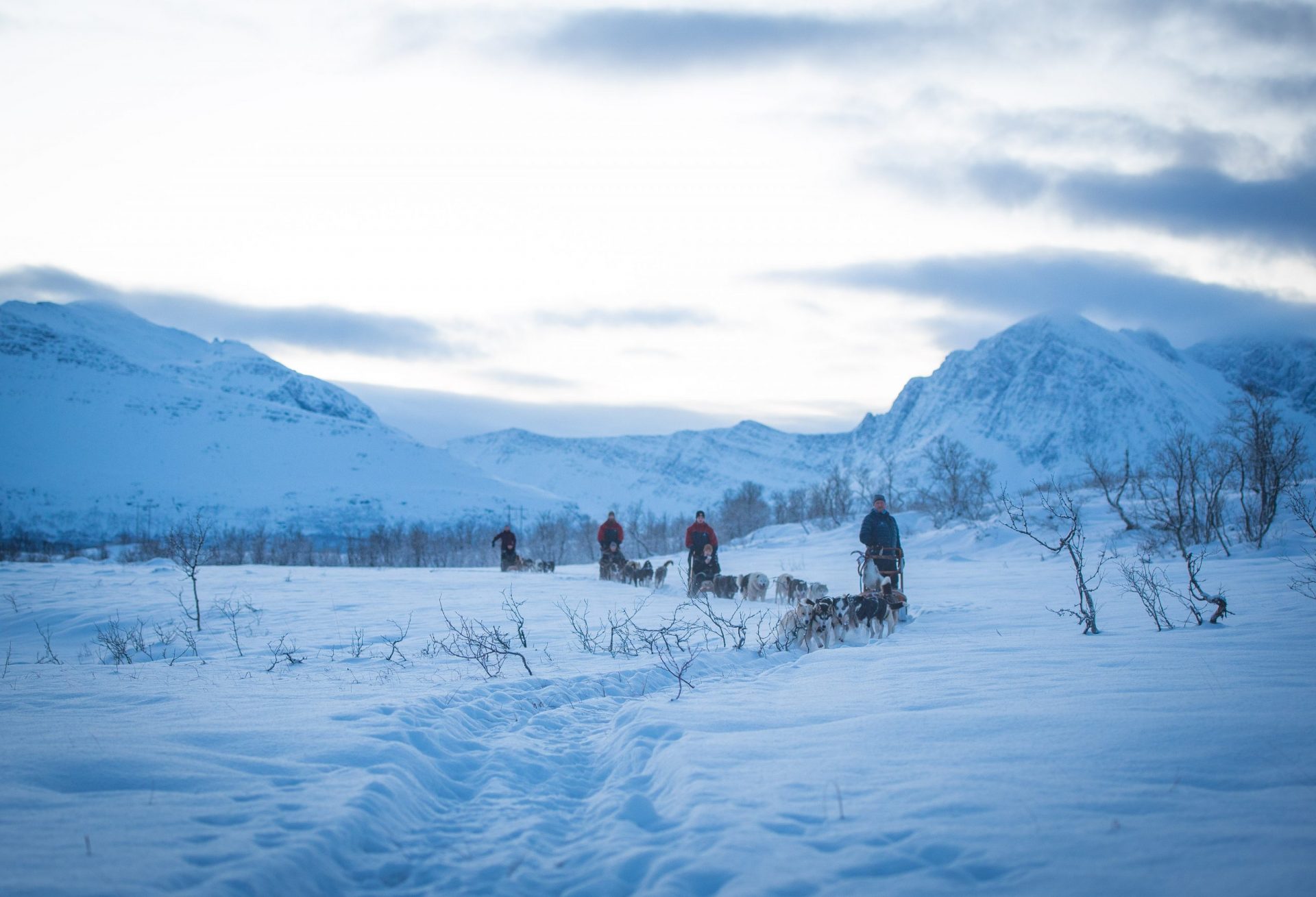
The next generation: Our breeding program
We welcome several litters of puppies each summer to maintain the bloodlines we have worked hard to perfect. These youngsters replace our retired dogs. We only breed using our best dogs; those who show high fitness, a kind temperament, good fur, long legs and a good appetite. We never sell our puppies or dogs, but of course we do occasionally buy in adult dogs to bring in new bloodlines.
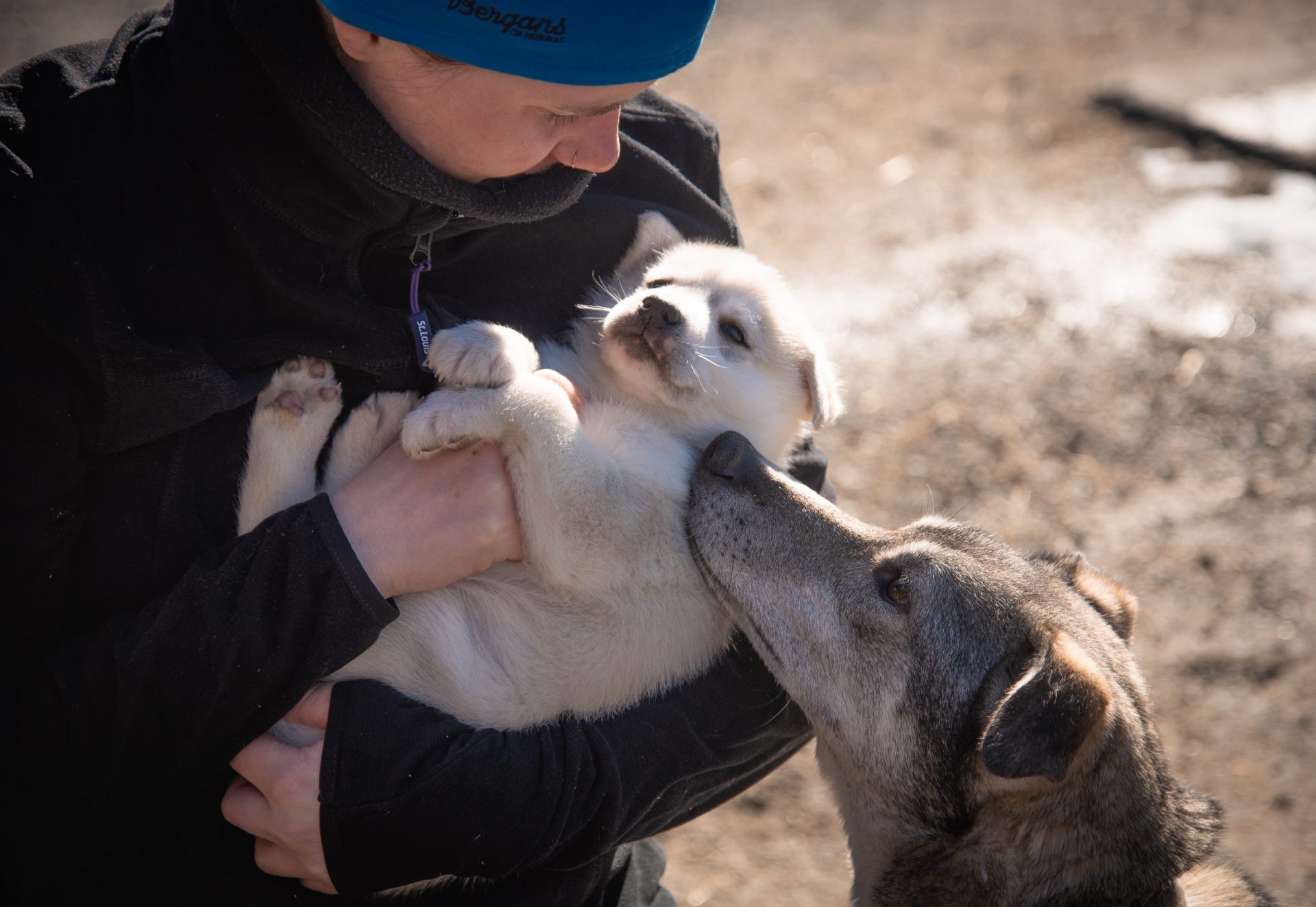

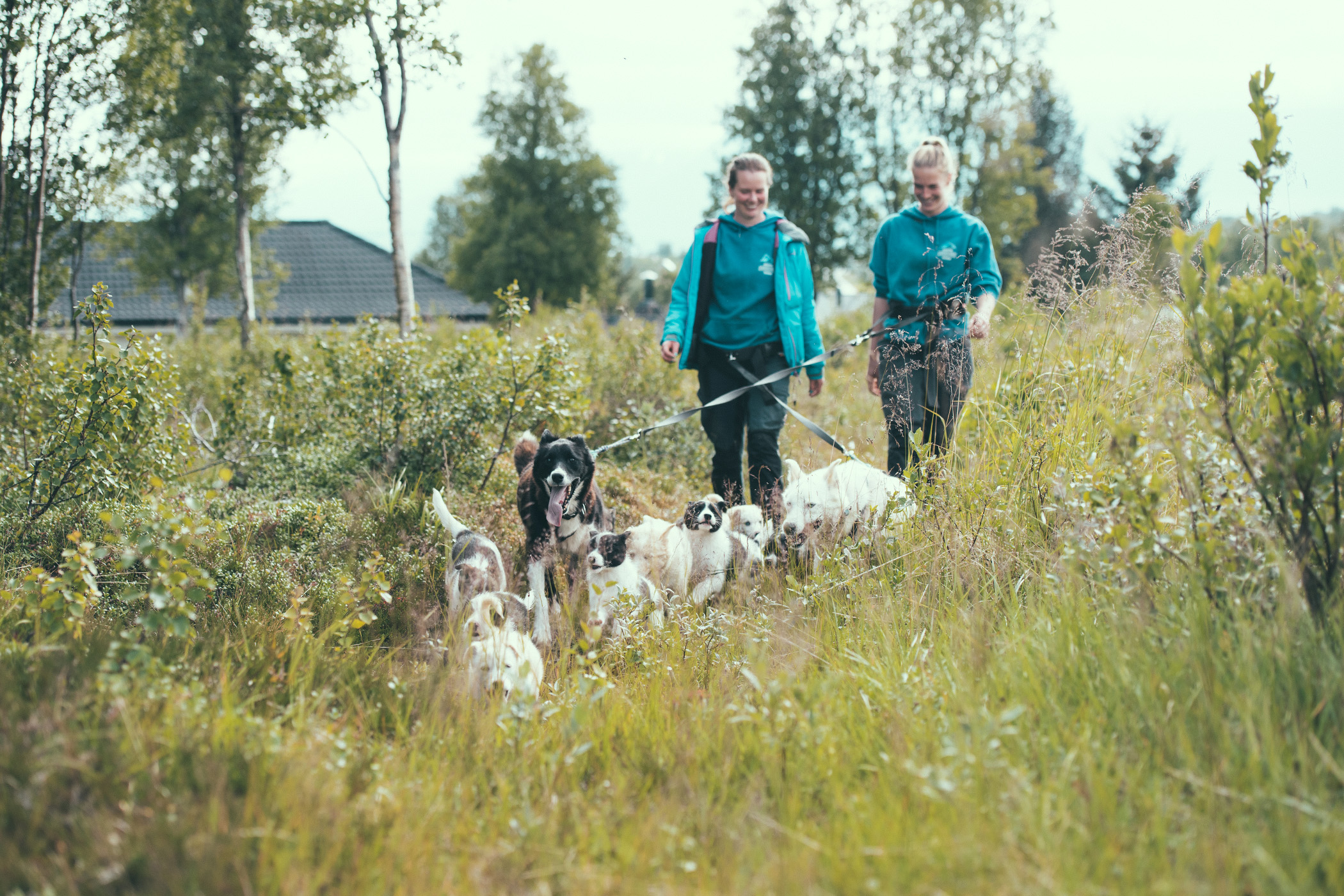
Health Checks: Prevention is better than cure
All of our dogs are wormed, vaccinated and given parasite treatment. Our local vet, Lisa, has has worked with us for almost 20 years helping us continually adapt our kennel and practices to maintain the best animal welfare standard we can.
In the summer of 2020 we completed our dedicated ‘puppy house’, freeing up Hege’s living room from puppy chaos! This bespoke building provides a heated indoor area for new mothers and their pups, as well as older dogs and those recovering from sickness or injury.
Depending on the trail conditions, we will use dog booties. This is to prevent damage to dogs with more sensitive paws when the ground is hard or icy. Often particular dogs will have more sensitive paws than others. We use ointment to strengthen the paw pad, and vary the speed and distance of training runs to avoid paw injuries.
We aim to avoid over-use of antibiotics unless truly necessary.
We have found several effective home-remedies such as using Manouka honey or thorough and regular flushing and cleaning of affected areas to avoid infection.
The Next Chapter: Retirement, rehoming and tough decisions
If a dog no longer wants to be a sled dog (this is very rare!) then we may rehome them to staff, friends or families that we know can give them a good and active life.
Making the decision about when to let a dog go is never taken lightly. In the event of serious illness we always put the needs of the dog and their quality of life first. Although we love all of our dogs and grow very attached to them, we must honour their hard work and loyalty by always putting their best interests first. For dogs who ‘live to run’ a major injury can be life changing. In some cases it is better to let them go than to force them into a stressful and unhappy sedentary life.
Due to the genetic diversity within Alaskan Huskies, the of majority of our dogs live long and healthy lives to the ripe old age of 13 – 14 years old.
Workload, exercise, diet and maintenance is all monitored on an individual basis. This includes choosing which senior dogs will remain with us at the kennel and which dogs to rehome.

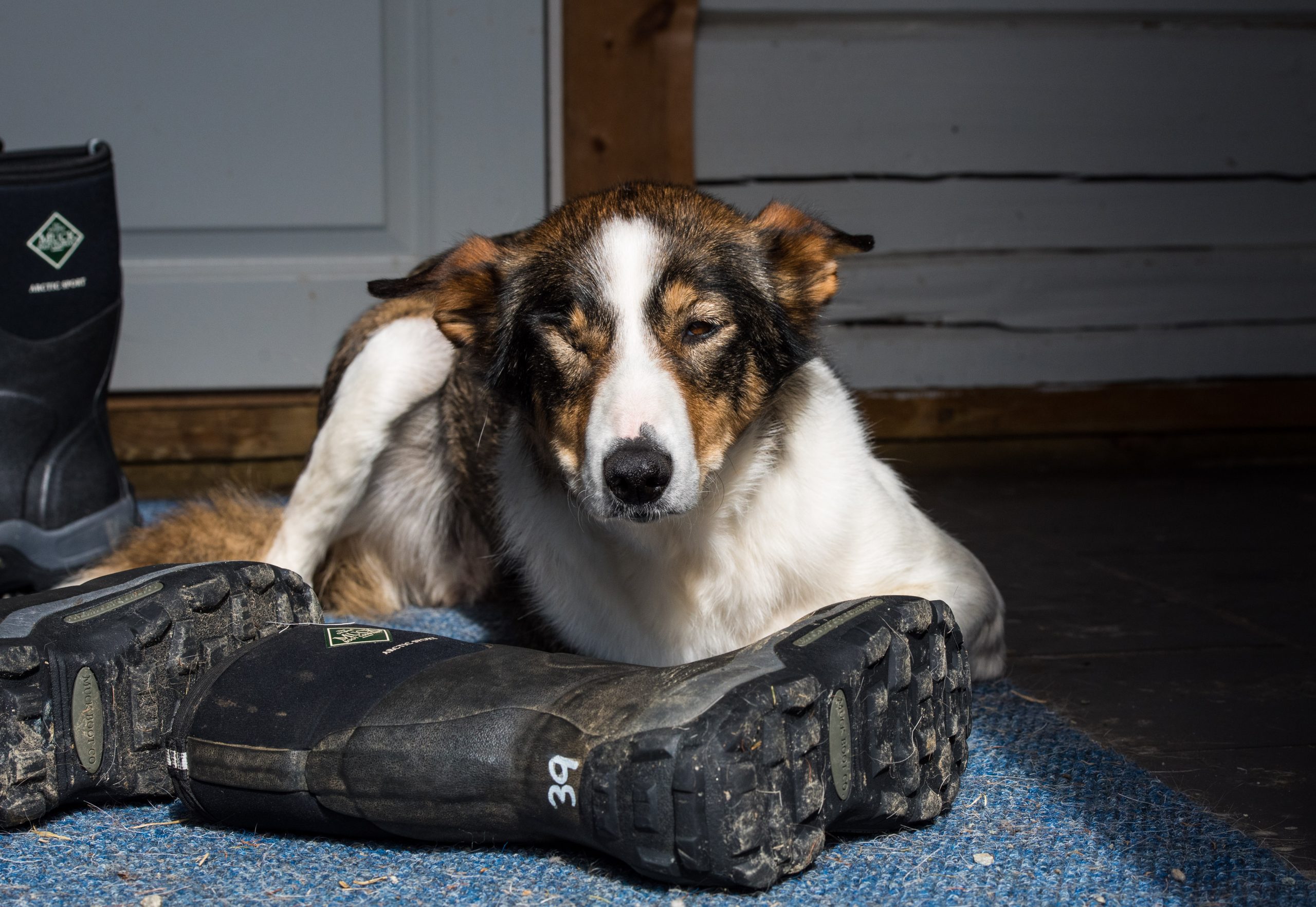
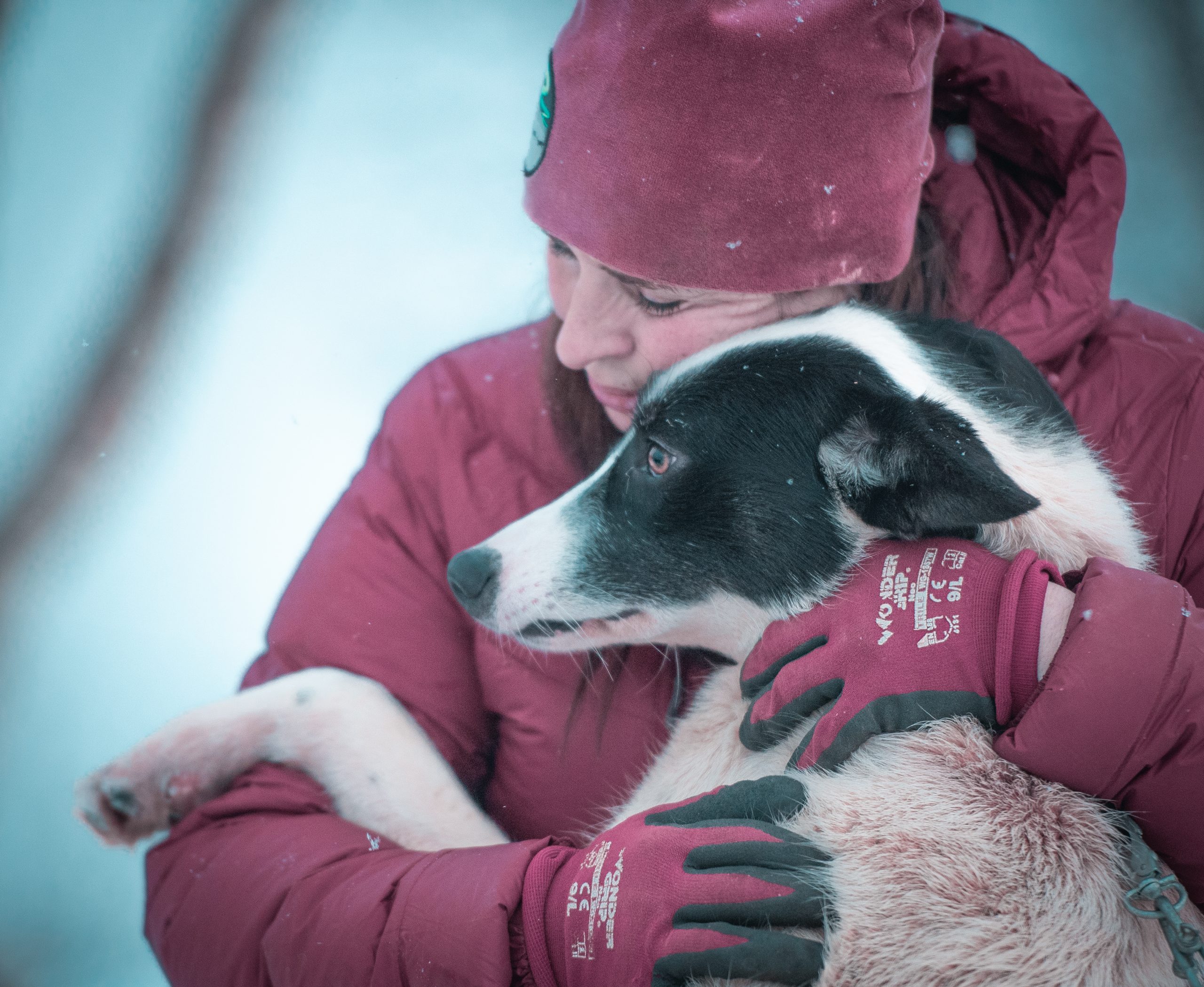
Feeling Good: Looking after the emotional and mental health of our dogs
When guests visit our kennel, they will not see deep running tracks around each dog house where huskies have been pacing round and round for hours at a time. They will instead notice how quiet and settled the dog yard is after the initial excitement of visitors has faded.
From very early on we reinforce calm and relaxed behaviours in our dogs when they are not ‘working’.
This keeps the stress levels in the kennel down, which in turn significantly reduces the chances of conflict between dogs. Our Kennel Manager ensures that dogs who share an enclosure or a double dog house are well matched to live together. Our young dogs are paired with calm senior dogs, so that they learn to relax and switch off when they are not dog sledding or playing in the free run.
Having a calm, quiet and relaxed kennel is important as this is also our home.
Dogs who are tethered have great opportunity to interact with the other dogs around them, not only their immediate neighbour. This means that we rarely have dogs who ‘cannot’ run well together in a dog sledding team. We also supervise large groups of dogs together in the free-run area. Again, this means that all of the dogs are happy and comfortable with each other, and have the opportunity to socialise with everyone.
Work Hard Play Harder: Free running, adventures and life outside the kennel
We are proud of the achievements of our dogs. Since beginning Arctic Adventure Tours in 1999, we have taken our huskies on many big adventures, including sledding to the Geographic North Pole, completing the long distance sledding Finnmarks Race 4 times, and many other smaller races.
During the COVID outbreak, a handful of our dogs went off to live with friends and families nearby. We were updated often with their adventures hiking across Norway and even going paddle boarding!
In both our home kennel and our Training Camp we have dedicated ‘free running’ areas. These are large fenced spaces where groups of dogs can run and play together safely.

Please scroll down to find some common questions click here to view our Animal Welfare Policy (PDF format).
Any questions about our dogs?
Find answers below to your most common questions
We keep responsibility for our dogs their whole lives.
We gently reduce their workload as they age, and then retire them to the special job of ‘kindergarten teacher’ for our young puppies. The social skills, training and patience that our older dogs have is invaluable for teaching exuberant puppies to be calm, not chew harnesses and help them start to learn commands (such as ‘right’ and ‘left’ in Norwegian of course!).
Even in their old age our dogs are very important members of the kennel. When you come on a dog sledding trip with us, you will meet all ages and stages of dogs, from excitable youngsters to older ‘part-timers’. When the time comes that our older dogs begin to prefer the sofa, or staying sleeping on a warm bed of straw rather than running in the mountains, we officially retire them. We then search for a local home for them to enjoy extra cuddles and easy hikes with a loving family. The decision to rehome a dog is made on an individual basis, and we carefully select the appropriate family based on the dog’s personality and preferences.
We like to give our dogs a little more space to play with each other in the enclosures, so we have a rotation system in the kennel which means that all of the dogs will have time in the enclosures and time on a tether. Dogs on the tether have more interaction with their doggy neighbours and our guests, so get a lot of extra attention, which they absolutely love.
We have to be very careful to build up our puppies slowly.
Doing too much physical exercise before they are fully grown can damage their joints. We start to training social skills from very early on, and always leave the puppies with their mother until they are at least 13-14 weeks old. By staying in their family group for longer, they learn vital skills such as bite inhibition, appropriate play, toileting outside and feeding manners.
At 6 months we introduce them to their harnesses and teach them to be calm when being hooked up in the dog sledding team. At 1 year old they will start short and slow training runs of 3 or 4km with a retired lead dog to help them with directional commands and setting a steady pace.
A well-fed dog is a happy dog!
We use a specialist dry food for high energy activities designed by Royal Canin. This is mixed with raw meat such as cow stomach. Cow intestines especially provide essential proteins and nutrients that keep our dogs happy and healthy. You will notice that most of our dogs are fit and lean, this helps them live a long life, avoiding obesity related illnesses such as diabetes, heart problems, joint issues and fatigue.
Alaskan Huskies are bred for performance, not for looks.
This mixed breed originates from the Gold Rush era, when miners would mix big strong freight dogs with hunting dogs to get them to the remote gold mining areas faster than their neighbour! The mix of breeds has since developed focusing on long-distance dogsled races. The mix of gundogs and racing dogs such as Setters, Pointers, Border Collies and Greyhounds with Siberian Huskies has helped to increase their speed, endurance and the drive of the dogs.
Alaskan huskies must have good fur to survive the harsh winter conditions, long legs to manage in deep snow, and a good appetite to thrive on trail rations. The wide genetic base of the Alaskan Husky means that they rarely suffer from inherited diseases, and live to between 12 and 14 years old.

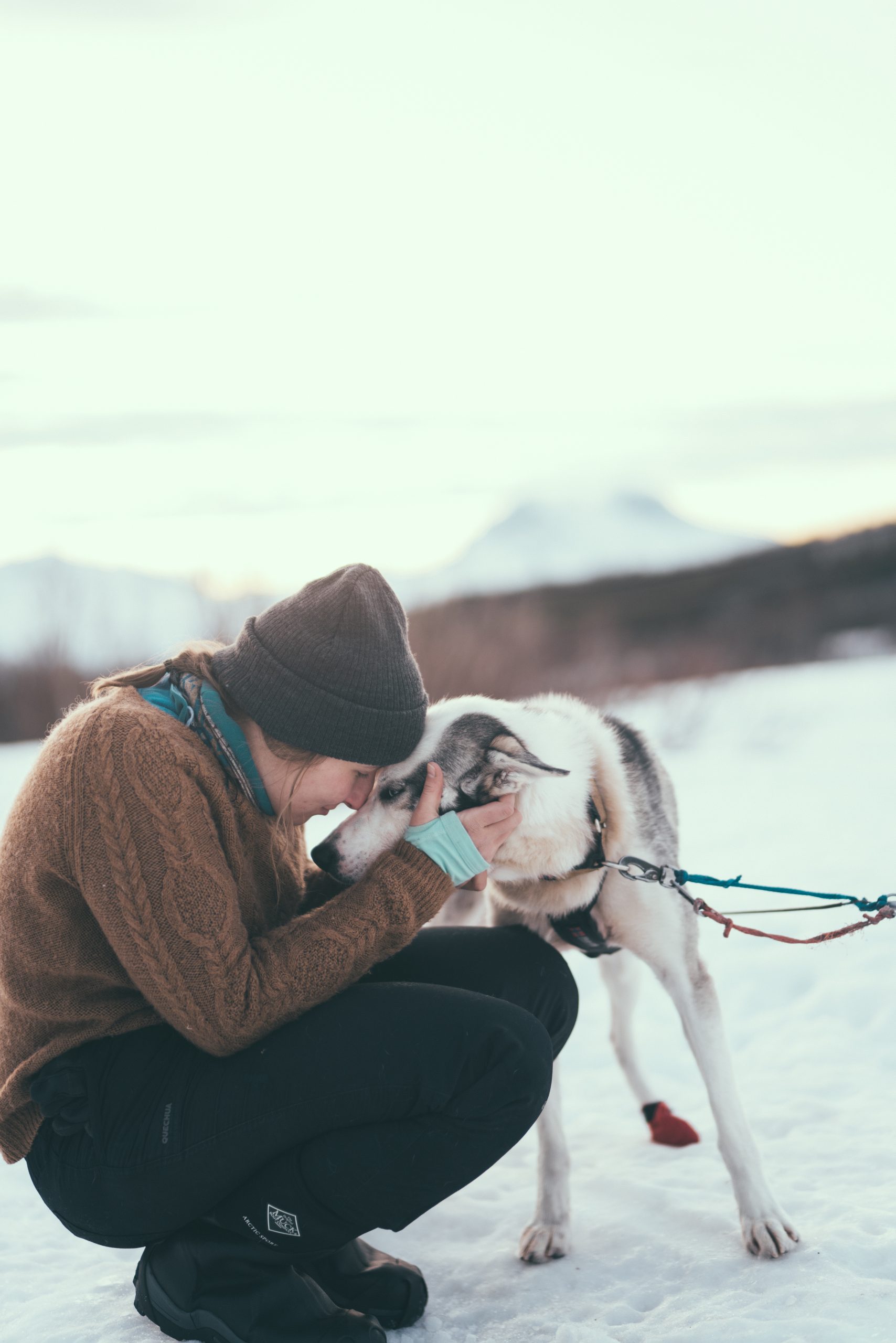
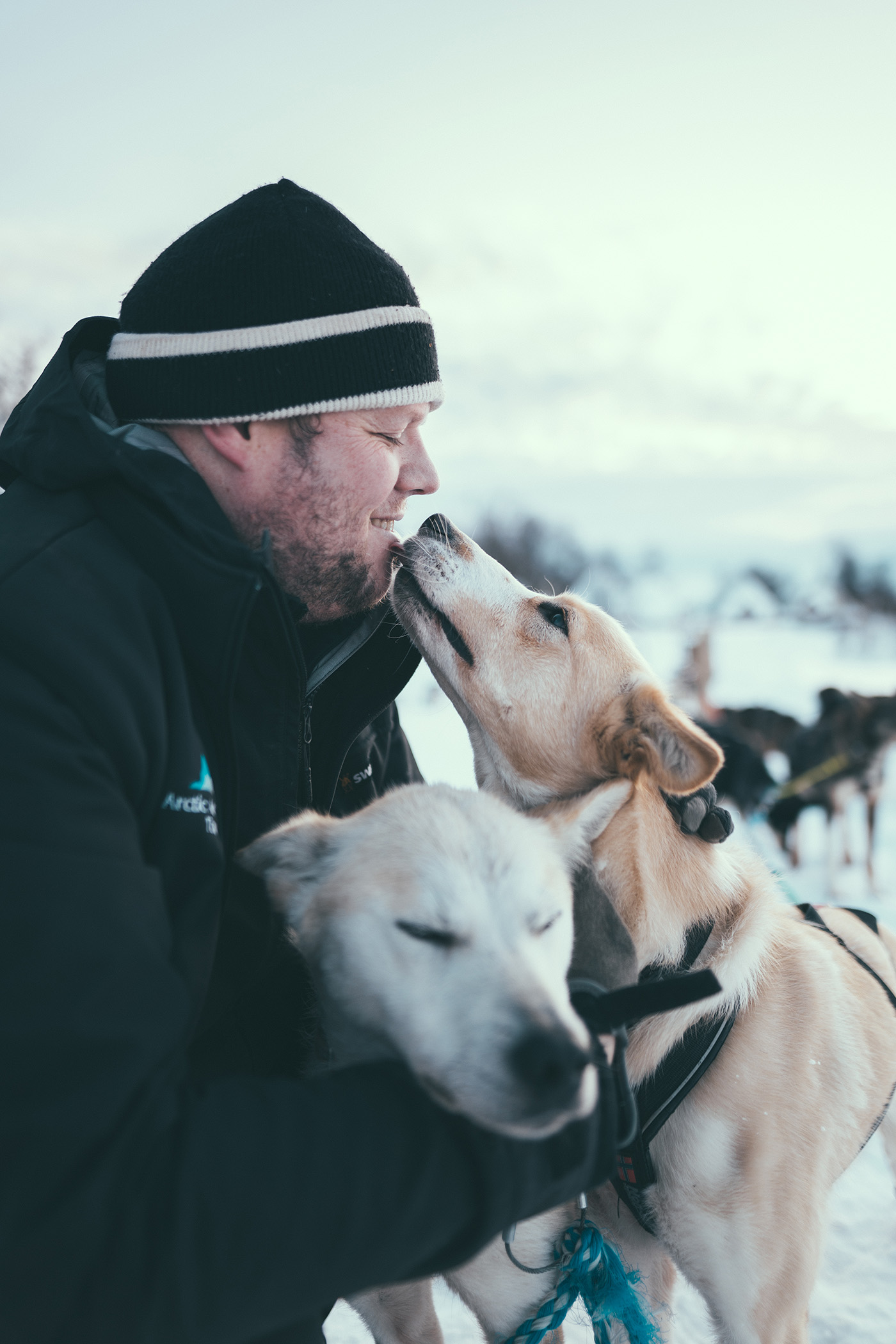
Do you have any other questions?Check our FAQ page!FAQ |

